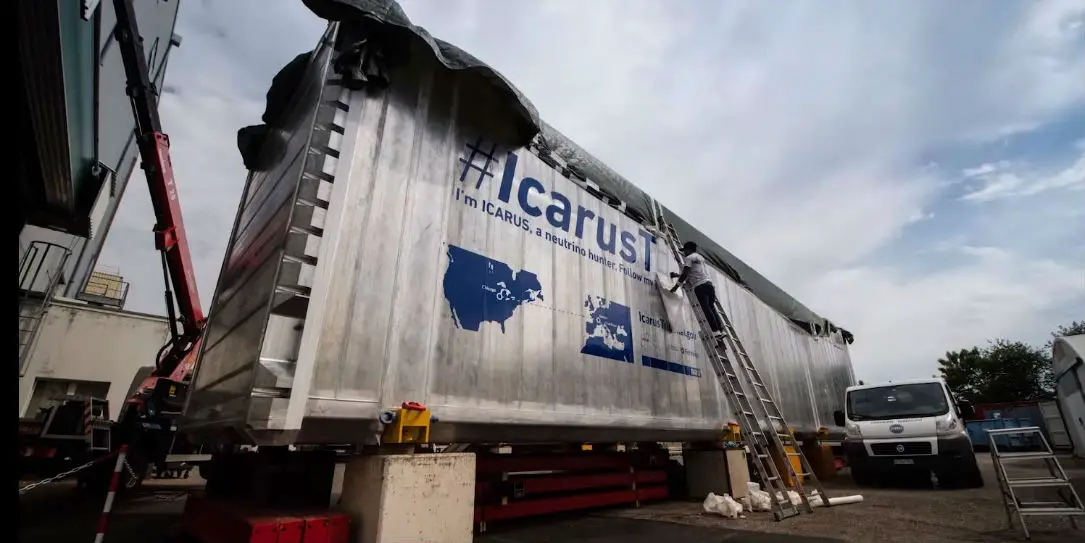Moving sensitive scientific equipment long distances is not an easy task and the ICARUS neutrino detector is making its second long distance journey. The ICARUS neutrino detector is the largest machine of its kind and is designed to find “extremely elusive” particles. The technology housed inside of the ICARUS neutrino detector is what’s behind some of the most advanced scientific studies in the world. The detector was born at Italy’s National Institute for Nuclear Physics (INFN) and was recently sent to European Organization for Nuclear Research (CERN) to be refurbished for use at Fermi National Accelerator Laboratory (Fermilab).
While the detector isn’t overly massive it still needs to be handled with care. This means the truck transporting it to its final destination at Fermilab can only crawl at 20mph. The ICARUS neutrino detector measures in at 60 feet long and weighs 120 tons. The detector is going to be installed alongside existing detectors and once activated it will begin searching for new types of “sterile neutrinos” beyond the three that have been found.
“Nailing down the question of whether sterile neutrinos exist or not is an important scientific goal, and ICARUS will help us achieve that,” said Fermilab Director Nigel Lockyer. “But it’s also a significant step in Fermilab’s plan to host a truly international neutrino facility, with the help of our partners around the world.”
The detector uses liquid-argon time projection technology – essentially a method of taking a 3-D snapshot of the particles produced when a neutrino interacts with an argon atom – which was developed by the ICARUS collaboration and now is the technology of choice for the international Deep Underground Neutrino Experiment (DUNE), which will be hosted by Fermilab.
The detector is currently on the road just miles away from Fermilab and should be arriving at the DOE facility within a few hours. It was scheduled to arrive at 3pm CST but is a little behind schedule. It’s encouraging to see CERN and INFN still closely working with Fermilab even after the shut down of the Tevatron. If you happen to get photos of ICARUS moving down the road, please send them to us at contact@techaeris.com with the subject line ICARUS.
What do you think of the resources it takes to move these massive pieces of scientific equipment? Let us know in the comments below or on Google+, Twitter, or Facebook.
Thanks to one of our readers in Dwight, IL Kaylin, who sent along this photo of ICARUS rolling through her area.











